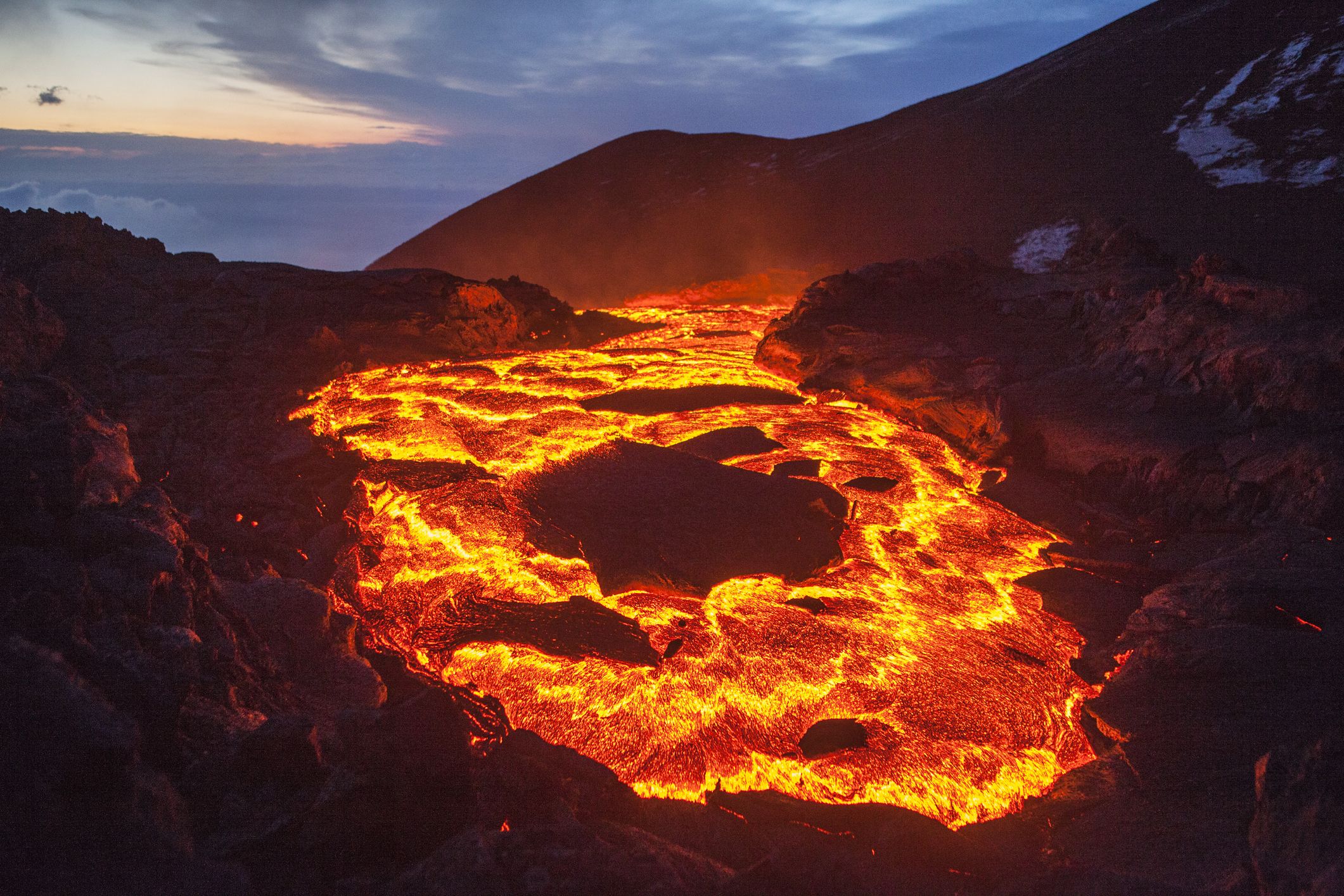
Some 250 million years ago, almost 90 percent of life on Earth disappeared in the most vicious mass extinction the world has ever known—the Permian–Triassic extinction or the "Great Dying."
Around the same time, hot rock rose within the Earth's mantle, roaring, steaming and spluttering in a colossal volcanic eruption that raged for almost a million years. Researchers have long probed possible links between this eruption and the mass extinction.
Now a team of geologists writing in Nature Geoscience think they've shown how the savage event may have driven the strange and titanic die-off. Researchers think the volcano churned chemicals into the atmosphere and wiped out the ozone layer, a protective shield guarding our planet from dangerous ultraviolet radiation.
The eruption occured to the north of ancient supercontinent Pangaea, which eventually broke up into the modern continents we see today. It took place in what is now Siberia, Russia, a region shaped by its violent volcanic history. Today, it's known as the Siberian Flood Basalts or the Siberian Traps.
"The scale of this extinction was so incredible that scientists have often wondered what made the Siberian Flood Basalts so much more deadly than other similar eruptions," Michael Broadley, a postdoctoral researcher at the Centre for Petrographic and Geochemical Research in Vandœuvre-lès-Nancy, France, and lead author of the research published in, said in a statement.
Broadley and colleagues looked to the lithosphere—our planet's crust and upper mantle—for clues to the region's dramatic history. Team member Lawrence Taylor, a former director of the Planetary Geosciences Institute at the University of Tennessee who died in September 2017, sourced a number of rocks that once lay deep within the Earth.
"Taylor was instrumental in supplying samples of mantle xenoliths, rock sections of the lithosphere that get captured by the passing magma and erupted to the surface during the volcanic explosion," Broadley explained.
Sophisticated analyses of these samples revealed this region of the lithosphere was brimming with halogens, including chlorine, bromine, and iodine. Halogens are chemicals that produce salts when they react with metals.
But after the eruption, these chemicals were nowhere to be seen. "We concluded that the large reservoir of halogens that was stored in the Siberian lithosphere was sent into the earth's atmosphere during the volcanic explosion, effectively destroying the ozone layer at the time and contributing to the mass extinction," Broadley explained.
Rich in clues to Earth's history, Siberia has yielded other incredible scientific finds. Earlier this month, scientists unearthed a 40,000-year-old extinct baby horse almost perfectly preserved in the region's permafrost.
Uncommon Knowledge
Newsweek is committed to challenging conventional wisdom and finding connections in the search for common ground.
Newsweek is committed to challenging conventional wisdom and finding connections in the search for common ground.
About the writer
Katherine Hignett is a reporter based in London. She currently covers current affairs, health and science. Prior to joining Newsweek ... Read more
To read how Newsweek uses AI as a newsroom tool, Click here.








